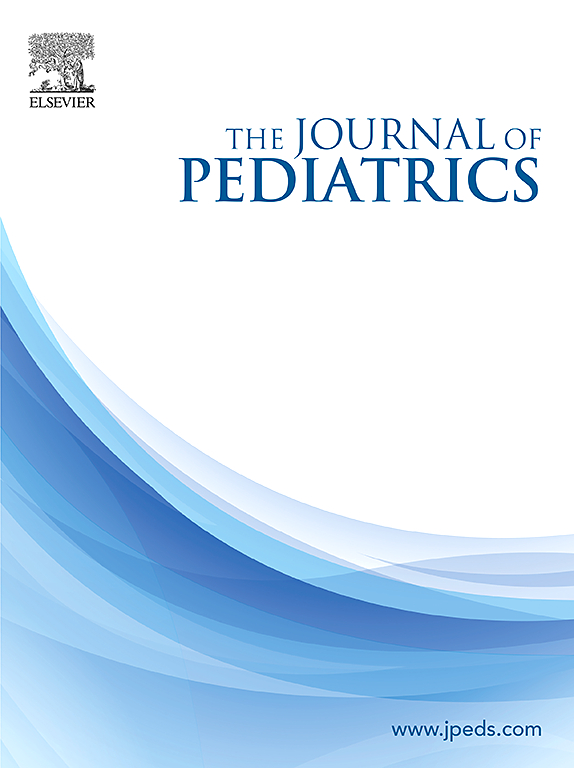Prenatal Substance Exposure and Multilevel Predictors of Child Protection System Reporting
IF 3.9
2区 医学
Q1 PEDIATRICS
引用次数: 0
Abstract
Objective
To describe child protection system (CPS) reports after delivery and examine associations between individual- and hospital-level predictors and CPS reporting in a cohort of infants with prenatal substance exposure.
Study design
This state-level, retrospective cohort study used administrative data to analyze births to Black, White, and US-born Hispanic mothers with documented prenatal substance exposure. We used a random intercept mixed-model with individual- and hospital-level predictors to capture any association between birth hospital and CPS reporting. Interaction terms allowed for different effects dependent on characteristics of the delivering parent and the dominant demographics of the hospital setting.
Results
Among 260 525 births during 2018 in California, 2.6% had documented substance exposure, with observed racial differences in substance use and type. Nearly 4% of births to Black mothers had documented cannabis exposure compared with roughly 1% among White and Hispanic mothers. The delivery hospital explained 24% of variance in CPS reporting. Hierarchical models revealed race and insurance-type differences in the likelihood a CPS report followed a substance exposed birth. Namely, publicly-insured births in hospitals where majority births were covered by private insurance had nearly twice the probability of being reported compared with those with private insurance.
Conclusions
We found variation in CPS reporting of births with diagnosed substance exposure at the hospital level, and interactions between hospital- and individual-level characteristics in their association with the likelihood of CPS reporting. Associations offer insight into potential areas of bias and inconsistency in policy implementation that might be diminished through improved decision-making tools and provider training.
求助全文
约1分钟内获得全文
求助全文
来源期刊

Journal of Pediatrics
医学-小儿科
CiteScore
6.00
自引率
2.00%
发文量
696
审稿时长
31 days
期刊介绍:
The Journal of Pediatrics is an international peer-reviewed journal that advances pediatric research and serves as a practical guide for pediatricians who manage health and diagnose and treat disorders in infants, children, and adolescents. The Journal publishes original work based on standards of excellence and expert review. The Journal seeks to publish high quality original articles that are immediately applicable to practice (basic science, translational research, evidence-based medicine), brief clinical and laboratory case reports, medical progress, expert commentary, grand rounds, insightful editorials, “classic” physical examinations, and novel insights into clinical and academic pediatric medicine related to every aspect of child health. Published monthly since 1932, The Journal of Pediatrics continues to promote the latest developments in pediatric medicine, child health, policy, and advocacy.
Topics covered in The Journal of Pediatrics include, but are not limited to:
General Pediatrics
Pediatric Subspecialties
Adolescent Medicine
Allergy and Immunology
Cardiology
Critical Care Medicine
Developmental-Behavioral Medicine
Endocrinology
Gastroenterology
Hematology-Oncology
Infectious Diseases
Neonatal-Perinatal Medicine
Nephrology
Neurology
Emergency Medicine
Pulmonology
Rheumatology
Genetics
Ethics
Health Service Research
Pediatric Hospitalist Medicine.
 求助内容:
求助内容: 应助结果提醒方式:
应助结果提醒方式:


